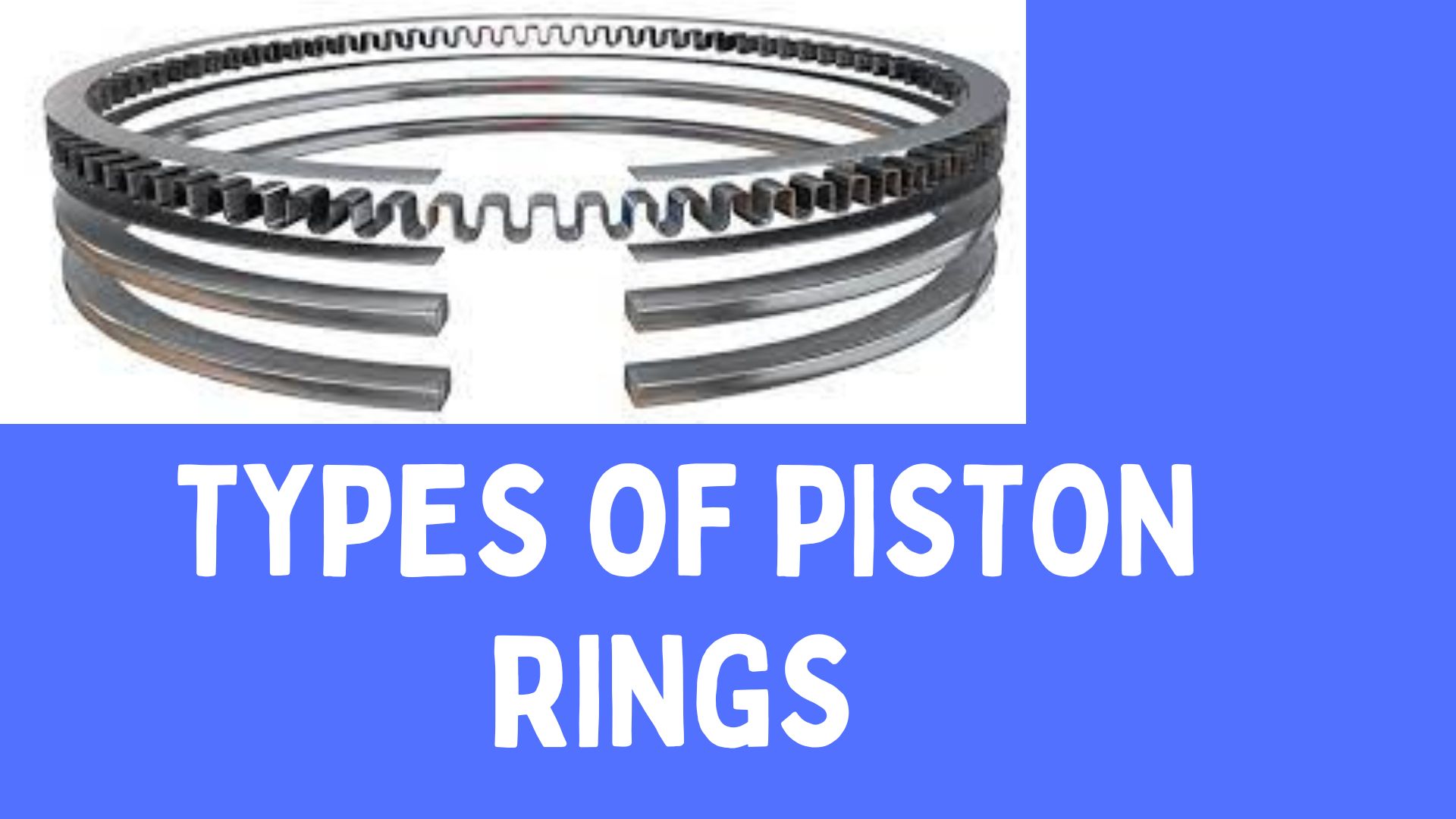Piston rings are an integral part of a piston engine and serve several important functions. They help to seal the combustion chamber, reduce the amount of oil that is consumed, and transfer heat from the piston to the cylinder wall. There are several different types of piston rings, each with its own unique characteristics and applications. The different types of piston rings are listed below –
1. Compression rings: These are the topmost rings on the piston and are responsible for sealing the combustion chamber. They are made from a hard and durable material, such as cast iron or chromium, and are designed to withstand the high pressures and temperatures of the combustion process. Compression piston rings are typically split into two or three sections, which allows them to expand and contract as the piston moves up and down in the cylinder.
2. Oil control rings: These rings are located below the compression rings and are responsible for controlling the amount of oil that is consumed by the engine. They are typically made from a softer material, such as cast iron or steel, and are designed to scrape excess oil off the cylinder wall and return it to the crankcase. Oil control piston rings are usually split into three sections, which allows them to flex and conform to the contours of the cylinder wall.
3. Scraper rings: These are a type of oil control ring that are designed to scrape excess oil off the cylinder wall and return it to the crankcase. They are typically made from a softer material, such as cast iron or steel, and are designed to have a sharp edge that can effectively remove excess oil from the cylinder wall. Scraper piston rings are typically used in high-performance engines where minimizing oil consumption is a priority.
4. Tension rings: These are a type of oil control ring that are designed to exert a radial force on the cylinder wall, which helps to maintain an effective seal and prevent oil from escaping into the combustion chamber. Tension piston rings are typically made from a harder and more durable material, such as cast iron or chromium, and are designed to withstand the high pressures and temperatures of the combustion process.
In conclusion, there are several different types of piston rings, each with its own unique characteristics and applications. Compression rings are responsible for sealing the combustion chamber, oil control rings help to reduce oil consumption, and scraper and tension rings are used to maintain an effective seal and prevent oil from escaping into the combustion chamber.
How piston rings get damaged ?
Piston rings can become damaged or worn out due to a variety of factors. Some common causes of piston ring damage include:
Lack of lubrication: If the engine is not properly lubricated, the piston rings can become dry and brittle, which can cause them to wear out prematurely.
Overheating: If the engine overheats, the piston rings can expand and become distorted, which can cause them to lose their seal and become ineffective.
Excessive pressure: If the engine is subjected to excessive pressure, such as during high-performance driving, the piston rings can become damaged or fail due to increased stress.
Contamination: If foreign particles or contaminants enter the engine, they can damage the piston rings or cause them to wear out prematurely.
Poor maintenance: Failing to properly maintain the engine, such as by not changing the oil regularly, can lead to damage or wear on the piston rings.
Age: Over time, even with proper maintenance, the piston rings can become worn out or damaged due to normal wear and tear.
In order to prevent damage to the piston rings, it is important to follow the manufacturer’s recommended maintenance schedule and use high-quality lubricants and filters. Regularly check the oil level and replacing it as needed can also help to prevent damage to the piston rings.
